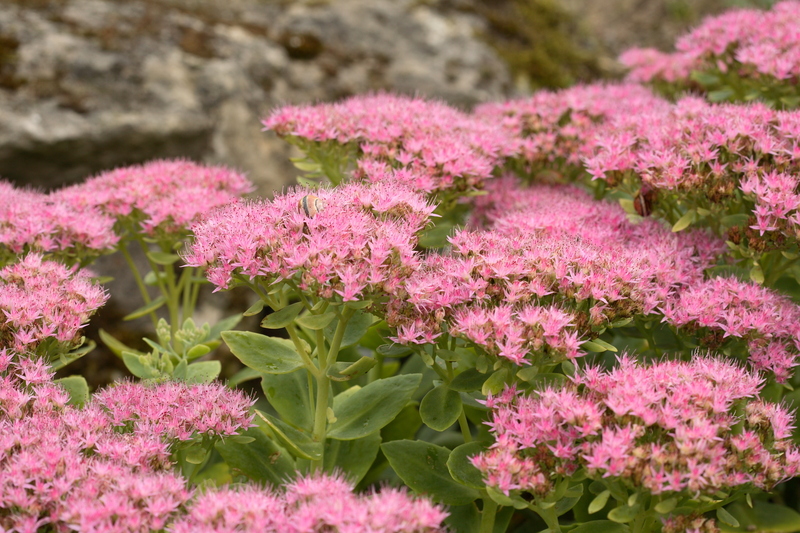Home Gardening as a Strategy for Climate Change Adaptation
Posted on 12/09/2025
Home Gardening as a Strategy for Climate Change Adaptation
In the face of increasing climate change impacts, communities worldwide are searching for practical and sustainable solutions. Home gardening is emerging as an effective and accessible strategy for climate change adaptation, offering a multitude of environmental, social, and economic benefits. Whether you refer to it as urban gardening, backyard gardening, or household food production, cultivating green spaces at home can contribute significantly to building resilience against climate-related challenges. In this comprehensive article, we'll explore how gardening at home can adapt to, and even mitigate, the adverse effects of a changing climate.

Understanding the Connection: Climate Change and Food Security
The consequences of climate change--ranging from soaring temperatures and erratic rainfall to more frequent droughts and pest outbreaks--are putting global food systems at risk. Home gardening presents an opportunity to increase food security on a local scale, offering households more control over their fresh produce supply. Here's why:
- Reduces Dependency on internationally sourced foods vulnerable to supply chain disruptions.
- Promotes Crop Diversity, which can cushion against losses from climate-induced crop failures.
- Shortens Supply Chains, minimizing food spoilage and transportation emissions.
Benefits of Home Gardening for Climate Change Adaptation
1. Enhancing Localized Resilience
Climate change is expected to make weather patterns less predictable and increase the frequency of extreme events. Home gardening enables families to:
- Adapt Quickly to local climate shifts by adjusting what they plant each season.
- Implement Water-Saving Techniques such as drip irrigation, mulching, and rainwater harvesting.
- Fortify Soil Health with composting and organic methods, enhancing drought tolerance and reducing erosion.
2. Mitigating Urban Heat
One of the key benefits of urban home gardening is its capacity to reduce the urban heat island effect. By adding vegetation to built environments, gardens:
- Cool the Air through evapotranspiration.
- Provide Shade, lowering ambient temperatures around homes.
- Absorb Carbon Dioxide, contributing to greenhouse gas reduction.
3. Conserving Biodiversity
Biodiversity is a vital component of climate resilience. Through home gardening, individuals:
- Protect Pollinators by planting native flowers and creating safe habitats.
- Grow Heirloom and Uncommon Varieties, which are often more resilient to pests and weather extremes.
- Maintain Soil Microbial Life critical for plant health and productivity.
4. Encouraging Sustainable Practices
Home-based gardening naturally leads to more sustainable living habits:
- Waste Reduction through composting kitchen scraps for fertilizer.
- Less Reliance on Chemical Inputs, thanks to natural pest control and organic amendments.
- Educating Future Generations about environmental stewardship and climate action.
How to Start a Climate-Resilient Home Garden
Choosing the Right Crops
Adapting to a changing climate means focusing on resilient crops. Consider:
- Drought-tolerant varieties: such as beans, okra, and certain herbs.
- Native plants: These are adapted to local conditions and require less maintenance.
- Diverse planting: Mix vegetables, fruit trees, herbs, and flowers to spread risk and attract beneficial insects.
Water-Wise Gardening Techniques
Water scarcity is a pressing climate challenge. To minimize use:
- Collect Rainwater for irrigation.
- Use Mulch to retain moisture and reduce evaporation.
- Install Drip Irrigation systems for targeted watering.
Building Healthy Soil
The foundation of a thriving, resilient home garden is healthy soil:
- Add Compost to improve nutrients and water retention.
- Practice Crop Rotation to prevent disease and maintain fertility.
- Grow Cover Crops in off-seasons to protect against erosion.
Integrated Pest Management
Reducing dependence on pesticides helps protect the environment and encourages natural balance:
- Invite Beneficial Insects like ladybugs and bees.
- Use Companion Planting to deter pests naturally.
- Rotate Crops to break pest cycles.
Home Gardening: Practical Tips for Different Climates
Climate awareness is essential when planning your garden. Here are adaptation strategies for various climatic regions:
Arid and Semi-Arid Regions
- Install shade barriers (using trellises or cloth) to protect vulnerable plants.
- Concentrate on deep-rooted perennials that survive drought.
- Use graywater recycling for non-edible plants.
Tropical and Subtropical Areas
- Choose heat-resistant crops like eggplant and certain leafy greens.
- Improve air circulation to prevent fungal diseases due to humidity.
- Stagger plantings to ensure continuous harvests despite erratic rain.
Temperate Zones
- Plant cold-hardy vegetables and use cloches for season extension.
- Mulch heavily before winter freezes to protect roots.
- Install rain gardens to manage excess precipitation.
The Role of Urban Home Gardening in Community Climate Action
Community-level adaptation is just as essential as individual efforts. When combined, the cumulative impact of home gardening in urban areas is substantial.
- Community Gardens provide collective knowledge and mutual aid.
- Local Food Sharing networks reduce food waste and build social ties.
- Educational Workshops foster community resilience and inspire policy change.
Case Studies: Cities and Home Gardening Adaptation
- Havana, Cuba: Urban gardening became a lifeline after the collapse of the Soviet Union, reducing food insecurity and increasing local biodiversity.
- Melbourne, Australia: City residents are transforming small yards, balconies, and rooftops into productive gardens to combat heatwaves and food shortages.
- Detroit, USA: Urban agriculture initiatives support home gardening, converting abandoned lots into nutritious, climate-resilient food sources.
Overcoming Barriers to Home Gardening for Climate Adaptation
While home gardening for climate adaptation is promising, it faces some challenges:
- Access to Space: Creative solutions, like container gardens or vertical planting, make gardening feasible in apartments or small plots.
- Knowledge and Skills: Leveraging online tutorials, local gardening clubs, and community resources empowers new gardeners.
- Resource Limitations: Upcycling materials for planters, saving seeds, and composting help lower costs and reduce environmental footprints.
- Pest and Disease Pressure: Regular monitoring, diversifying plant species, and organic practices help keep problems manageable.

The Future of Home Gardening as a Climate Adaptation Strategy
As the realities of climate change become more apparent, the world will rely increasingly on decentralized food systems and regenerative practices. Home gardening for climate change adaptation represents an elegant blend of ancient wisdom and modern science. By encouraging biodiversity, conserving water, and promoting self-reliance, household gardens can create a buffer against a volatile climate.
More importantly, home gardening empowers individuals to become advocates for sustainability and climate adaptation within their neighborhoods. From school gardens teaching youth about environmental stewardship to rooftop farms that help cool our cities, every garden counts.
Conclusion: Cultivating Hope through Home Gardening
In summary, home gardening as a climate change adaptation strategy offers tangible benefits for individuals, families, and communities. These efforts, multiplied across neighborhoods and cities, can transform our collective response to climate change--delivering fresher food, cleaner air, enhanced biodiversity, and stronger local bonds.
Whether you have a sprawling backyard, a sunny balcony, or just a few pots on a windowsill, you have a role to play in cultivating climate resilience. Start small, learn as you go, and join the global movement for a greener, more sustainable future. Remember: every seed planted is an act of climate adaptation--and a step toward a healthier planet.

